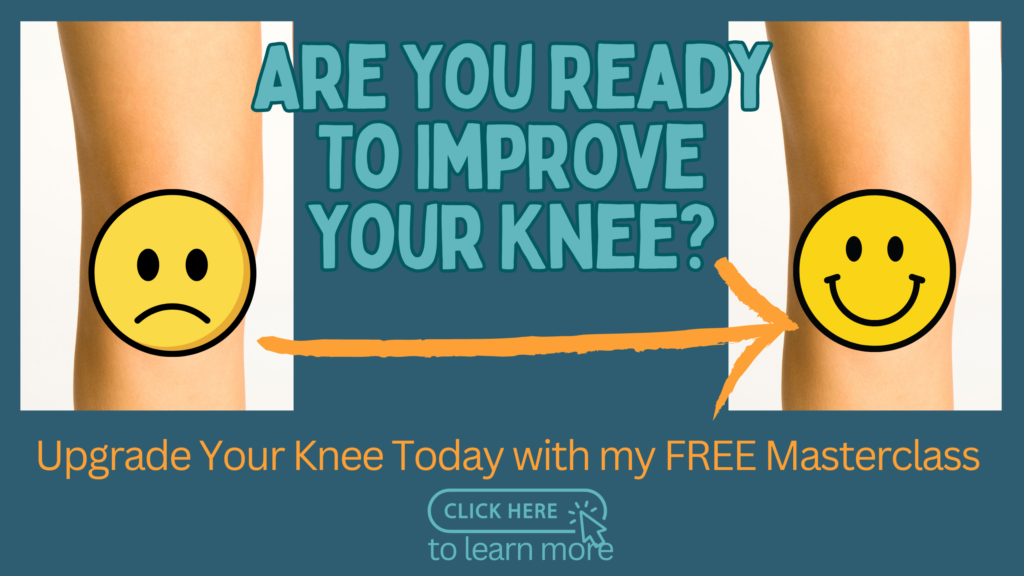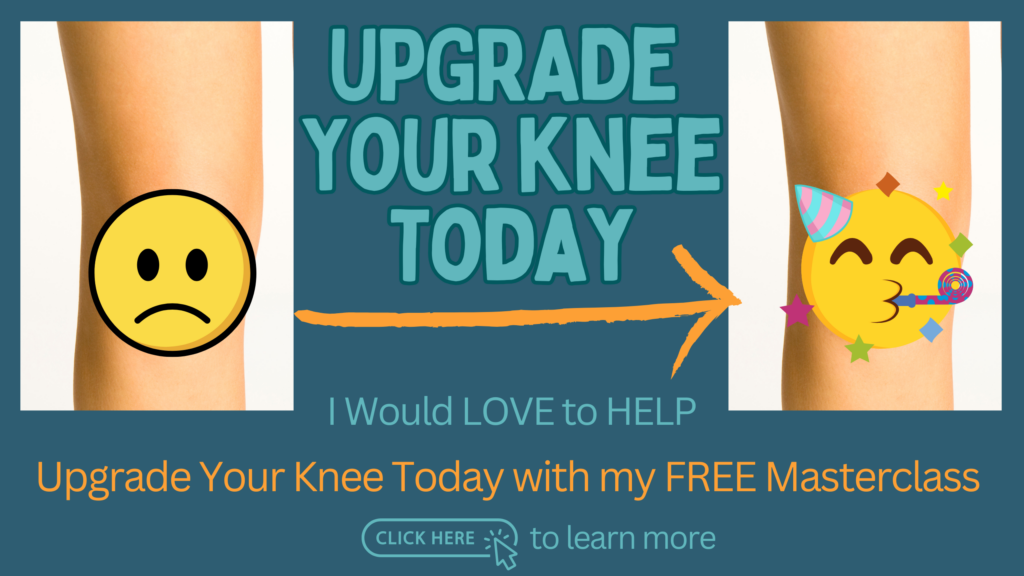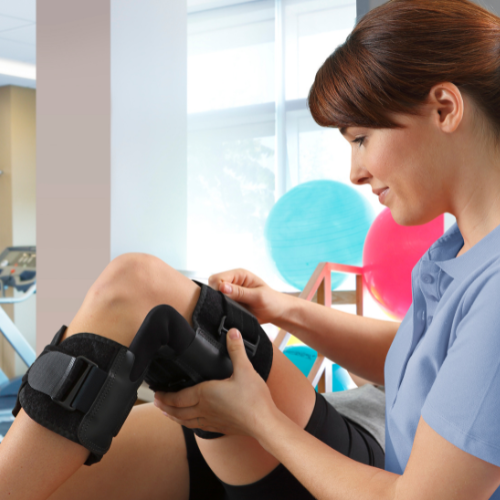Introduction
Arthritis can be a debilitating condition, particularly when it affects the knees. The pain, swelling, and stiffness can severely impact your quality of life. One way to manage these symptoms and regain some level of mobility is through the use of knee braces. Knee braces are designed to support and offload the knee but as a physiotherapist, I can not emphasise the importance of working on your body’s knee brace – your muscles. However, saying that braces do occasionally have their use so let’s take a look. There are so many options available, how do you choose the best one for your needs? In this guide, we’ll explore 5 of the best knee braces for arthritis, considering factors such as support, comfort, and effectiveness, helping you to choose the best option for you and your needs.
When to Use a Knee Brace
Knee braces can be beneficial for short-term relief in specific situations. Your knee is bound to flare up at the most inopportune moments – the day before your daughter’s wedding, the week before a long-awaited trip or the eve of a house move. So if you can manage these situations more comfortably and confidently with a knee brace then why not? Using a brace can provide temporary support and pain relief. However, for long-term management of arthritis, relying on a knee brace is not recommended. Building your body’s own “knee brace” through muscle strengthening and proper alignment is essential for offloading the knee and reducing pain. In some cases, a brace may increase pain in the knee, because it changes the way the joint is loaded – not every arthritic knee will like this.
You may find this blog helpful – Would a brace help my arthritic knee?
Choosing the Right Knee Brace for You
When selecting a knee brace for arthritis, consider the following factors:
- Level of Support:
- Determine how much support you need based on the severity of your arthritis. Hinged braces offer the most support, while compression sleeves provide the least.
- Comfort:
- Ensure the brace is comfortable enough to wear for extended periods. Look for breathable materials and adjustable straps.
- Fit:
- A properly fitting brace is crucial for effectiveness. Take accurate measurements of your knee and refer to the manufacturer’s sizing chart.
- Activities:
- Consider your daily activities. If you’re active, you might need a brace that allows for more mobility while still offering support.
5 Popular Knee Braces
Please note I have not personally tried these but others have and liked them – making them a great place to start.
1. DonJoy Reaction WEB Knee Brace
The DonJoy Reaction WEB Knee Brace is a popular choice among arthritis sufferers. Its unique web-like design offers excellent support and shock absorption. The brace is particularly good for people with mild to moderate arthritis who need a brace that can help with everyday activities.
Pros:
- Innovative web design for shock absorption
- Lightweight and breathable
- Adjustable straps for a customized fit
Cons:
- May not provide enough support for severe arthritis
- Higher price point
2. EzyFit Knee Brace Support
The EzyFit Knee Brace is an excellent option for those who need a balance between support and comfort. Made with neoprene, it offers warmth and compression, which can help reduce swelling and pain. Its three-strap design ensures a secure fit.
Pros:
- Comfortable neoprene material
- Provides warmth and compression
- Secure fit with three adjustable straps
Cons:
- Bulky for some users
- Velcro straps may wear out over time

3. Bauerfeind GenuTrain Knee Brace
Bauerfeind’s GenuTrain Knee Brace is renowned for its high-quality materials and effective support. It features a unique pad that massages the knee joint as you move, promoting blood flow and reducing pain and swelling. This brace is ideal for those with moderate to severe arthritis.
Pros:
- High-quality construction
- Provides targeted compression and support
- Comfortable for extended wear
Cons:
- Expensive
- May require careful sizing for the best fit
4. Mueller Adjustable Hinged Knee Brace
For those needing more robust support, the Mueller Adjustable Hinged Knee Brace is an excellent choice. It features side hinges for stability, making it suitable for people with severe arthritis or those recovering from surgery. The open-patella design helps relieve pressure on the knee cap.
Pros:
- The hinged design offers excellent stability
- Open-patella design reduces pressure on the knee cap
- Affordable
Cons:
- Bulky and may restrict movement
- Can be uncomfortable if not fitted correctly
5. Shock Doctor Ultra Knee Support with Bilateral Hinges
The Shock Doctor Ultra Knee Support is another great option for those who need significant support. It features bilateral hinges for enhanced stability and a pre-curved anatomical design for a better fit. This brace is perfect for high-impact activities or severe arthritis.
Pros:
- Bilateral hinges provide maximum support
- Pre-curved design for a natural fit
- Durable construction
Cons:
- Bulky and heavy
- Higher price range
The Importance of Strengthening and Alignment
While knee braces can offer temporary relief, they are not a long-term solution for managing arthritis. To truly address knee pain and improve function, it’s essential to focus on strengthening the muscles around the knee and achieving proper body alignment.
Strengthening Your Body’s Knee Brace
Engaging in targeted exercises will provide the support your knees need. Strong muscles help stabilise the joint, reduce strain, and alleviate pain. Activities such as physiotherapy, resistance training, and low-impact exercises like swimming and cycling can be highly beneficial.
Top Tip – Begin your strengthening journey on my FREE Masterclass – click to learn more.
Achieving Proper Alignment
Proper alignment of the body can significantly offload the knee joint, reducing pain and improving function. Working with a physiotherapist to correct posture, gait, and alignment issues can have a profound impact on knee health. Techniques such as stretching tight muscles, strengthening weak areas, improving posture and using orthotic inserts can help achieve optimal alignment.
Conclusion
Knee braces can be a useful tool for managing arthritis pain in specific situations, and hopefully, now you are more informed as to what to look for in a brace should you need one. Just remember braces should not be relied upon as a long-term solution. Instead, focus on building strength and achieving proper alignment to support your knees naturally. By doing so, you can reduce pain, improve mobility, and enhance your overall quality of life.
Take care, Helen
Helen Manders BSc (Hons) MCSP HCPC
Chartered Physiotherapist Treating Arthritic Knees Since 2001




